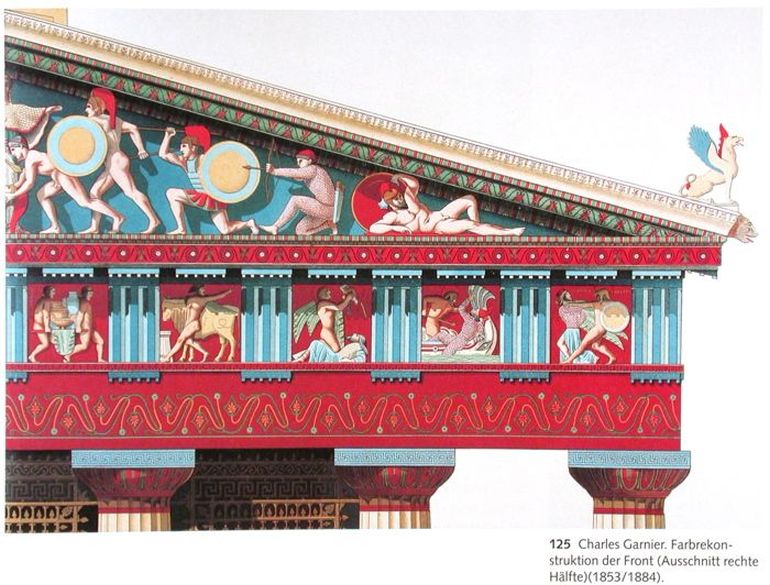How The Ancient Greek Statues Really Looked? Possibly Pretty Vibrant With Various Colors
To most of us history enthusiasts, the phrase Classical Greece brings forth reveries of temples, sanctuaries and sculptures in their distinctly white marble facades. This notion perhaps has to do with the numerous extant ancient Greek specimens of structures (like the famed Parthenon), along with statues preserved in their ‘achromic’ forms in various museums around the globe. But when it comes to historicity, it was probably the opposite that was true. In essence, most tangible artworks and architectural feats (including the Parthenon) of ancient Greece probably showcased their kaleidoscopic flair with brightly painted facades.
As Matthew Gurewitsch from the Smithsonian Magazine, wrote back in 2008 –
To us, classical antiquity means white marble. Not so to the Greeks, who thought of their gods in living color and portrayed them that way too. The temples that housed them were in color, also, like mighty stage sets. Time and weather have stripped most of the hues away. And for centuries people who should have known better pretended that color scarcely mattered.
Now from the literary perspective, the Euripides play from 5th century BC clearly mentions (with the fictional narrative coming from Helen of Troy) how wiping a color off a statue is akin to disfiguring its craftsmanship. And in our modern context, technology has rather complemented such a colorful ‘past’ of the Greeks. To that end, German archaeologist Vinzenz Brinkmann has made use of various scientific techniques ranging from ultraviolet light, high-intensity ‘raking light’ to infrared and X-ray spectroscopy, to discern and reconstruct many of the multifarious hues and colors prevalent in ancient Greek statues.



Many of his color sources have a ‘tinge’ of authenticity to them, with the use of organic pigments mirroring the propensity of ancient Greek craftsmen, painters and sculptors. For example, Brinkmann derived his “green from malachite, blue from azurite, yellow and ocher from arsenic compounds, red from cinnabar, black from burned bone and vine.” The first of these reconstructions made their debut in an exhibition held at the Glyptothek museum in 2003. -Source: realmofhistory.com
Watch the video:









